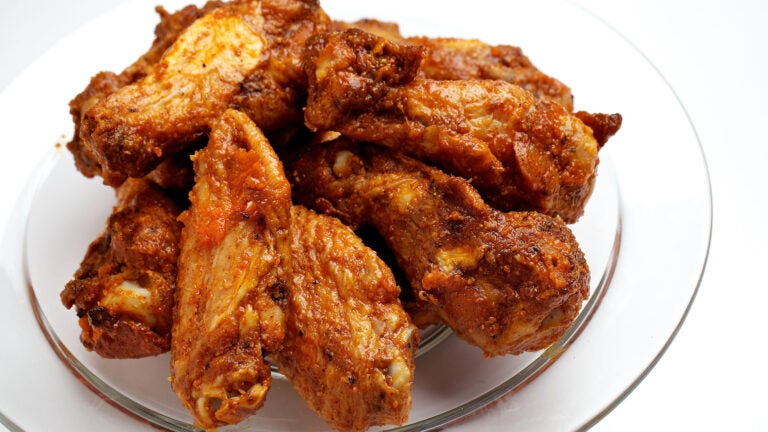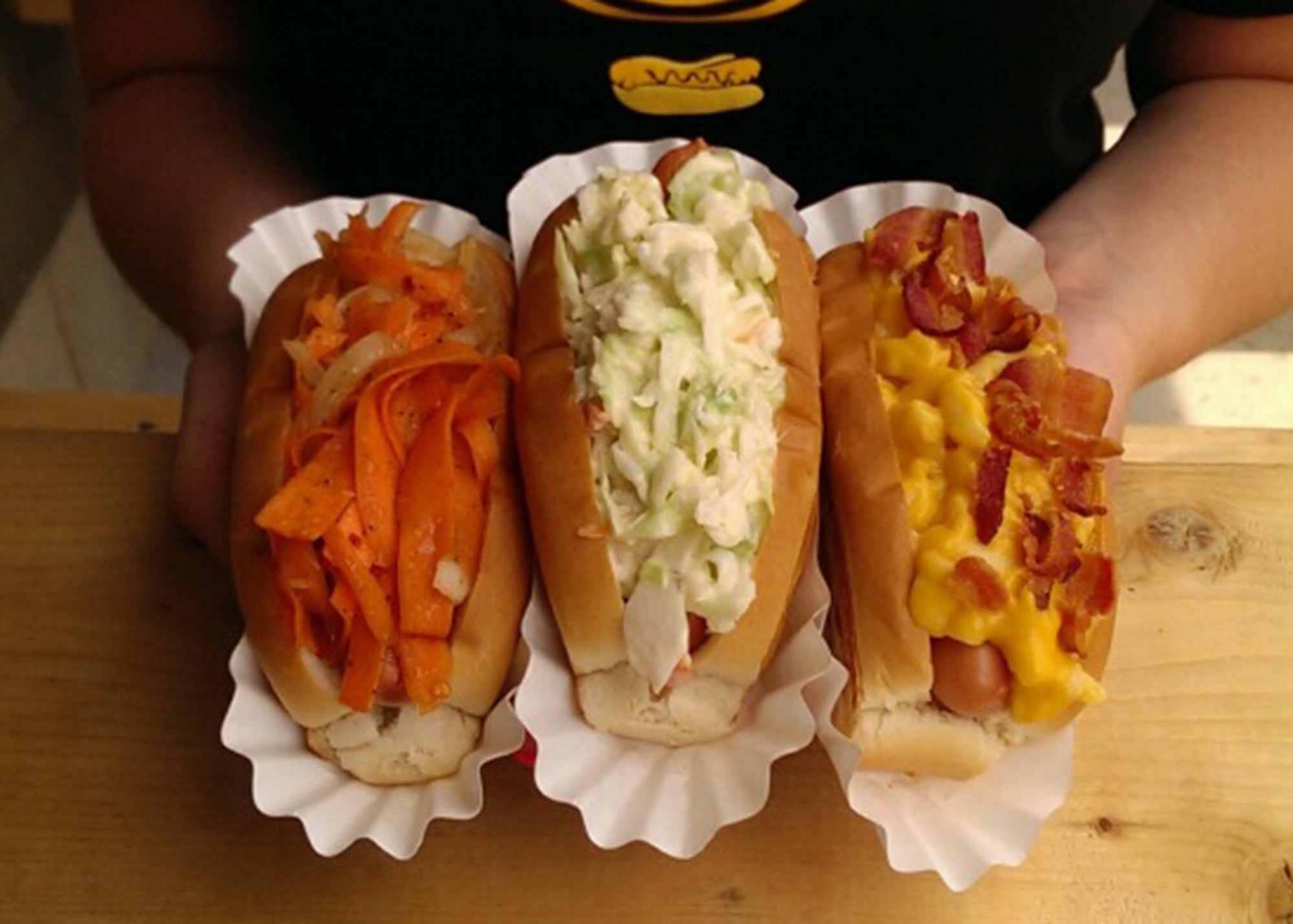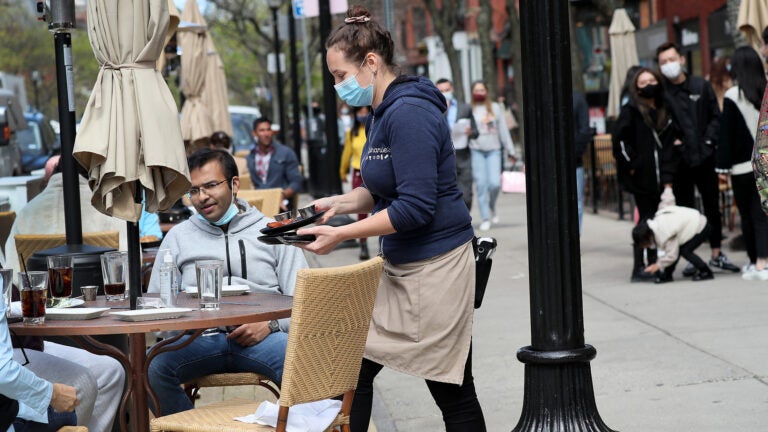"Chicken has been a nightmare in terms of pricing and shortage," one food truck owner said.

As the economy slowly comes back to life, food and supply shortages have seeped into almost every aspect of the restaurant industry. Starbucks has reported a shortage of cups, straws, and peach-flavored juice. Ketchup packets are hard to find. And with most items, a dearth in supply has led to skyrocketing prices, leading some restaurants to increase prices on their own menu.
Just Wingin’ It was born during the pandemic. The chicken wing food truck, founded by Chris Leotsakos and Cody DuBuc and a frequent presence at local breweries, received approval to start operating on March 15, 2020 — just two days before the shutdown. It finally launched in August, and along with every other restaurant, experienced difficulty finding staples like gloves and masks.
But since the start of 2021, finding and purchasing chicken wings has become the primary issue. When Just Wingin’ It first debuted, wings were roughly $2.20 per pound at Restaurant Depot, DuBuc explained. A month ago, they rose to $4 per pound.
“Chicken has been a nightmare in terms of pricing and shortage,” DuBuc said.
DuBuc said that at the beginning of the year, Restaurant Depot limited the number of chicken wings they could buy to five cases, or around 200 pounds.
“If we’re having a good day, we could easily go through all that product,” DuBuc said. “They started getting some stock back [around March], but the price was so high at that point. Trying to justify paying that much was a real tough pill to swallow. But we’re a chicken wing truck, so our hands were kind of tied.”
To make up for the increase in spending, Just Wingin’ It has raised prices on its chicken wings: Six wings from the food truck used to cost around $7.25, but now they cost $9 to $9.50.
Jina Kim, co-owner of Coreanos in Allston, is facing the same issue. A popular item at the Korean-Mexican restaurant is Korean fried chicken, and Kim said that while the supply of chicken has slowly increased in recent months, so has the price — roughly 25 percent.
Kim said she’s also seen the price of beef, featured prominently in the restaurant’s bulgolgi and kalbi dishes, nearly double at stores like BJ’s Wholesale Club and Costco. But she hasn’t raised menu prices just yet.
“Prices are still high, so we’ll think about a price change,” she said. “Now we’re trying to keep the prices [the same], because we have many regular customers and most of the customers are young people and students.”
The rising cost of chicken is attributed to a number of factors, including a reduced supply after the winter storm in Texas (a major chicken producing state), an increase in chicken wing delivery during COVID-19, and a sudden demand for chicken as more restaurants begin to reopen.
But not every chicken-centric restaurant has been affected by the poultry shortage. Andrew Holden, owner of Shy Bird in Cambridge, said that his restaurant uses all-natural, limited-production chicken raised in Indiana, which might have helped with availability. Instead, shortages have come in other forms.
“The biggest struggle for us has been equipment supply chain delays: items you would previously think of as stock, like a new flat top grill or fryer, taking four to five months to arrive,” Holden shared in an e-mail. “Certain glassware takes weeks as opposed to days. All in all, we are in a much better place than we were a year ago, but the economy ramping up is definitely presenting a whole new set of challenges for restaurants to get through.”

Laurie Russell owns Top Dog of Rockport, which specials in hot dogs, another ingredient in short supply. Russell said her business gets its hot dogs from an independent distributor and hasn’t yet experienced a shortage with that item, but she is finding it difficult to purchase other ingredients.
“We’re having a problem with condiments and frying oil, like vinegar and mustards and things like that,” she said. “My vendors can’t even explain to me why there’s a shortage on frying oil. In fact, the price just jumped 20 percent in the past three weeks on that.”
Top Dog uses a mix of soybean oil and canola oil for frying, changing out the oil on a daily basis. According to Bloomberg, Brazil — the world’s biggest soy producer — has experienced unfavorable weather, leading to a lower crop yield; simultaneously, demand for soybeans is also on the rise.
Hot dog rolls cost more than they did last year, Russell said, and she’s had to raise her hot dog prices by a nickel.
“It doesn’t seem like a lot, but it is,” Russell said.
Many of the restaurateurs who spoke with Boston.com agreed that these shortages won’t last forever and that an end is in sight. Until then, they’re hoping customers will sympathize with the difficulties their restaurants are facing and the price increases that may accompany it.
“For the most part, [customers] have been understanding,” DuBuc said. “You have so many business where restaurant prices have gone up a reasonable amount, and a lot of restaurants, especially during the pandemic, were initiating things like a staff fee with any order. Most people understand because everyone was just trying to get by at some point. Some still are. And some are still having to debate whether they’re closing up shop or not.”
Newsletter Signup
Stay up to date on all the latest news from Boston.com
"local" - Google News
June 16, 2021 at 08:26PM
https://ift.tt/3wIHLTK
How continued food shortages and rising prices are impacting local restaurants - Boston.com
"local" - Google News
https://ift.tt/2WoMCc3
https://ift.tt/2KVQLik
Bagikan Berita Ini















0 Response to "How continued food shortages and rising prices are impacting local restaurants - Boston.com"
Post a Comment